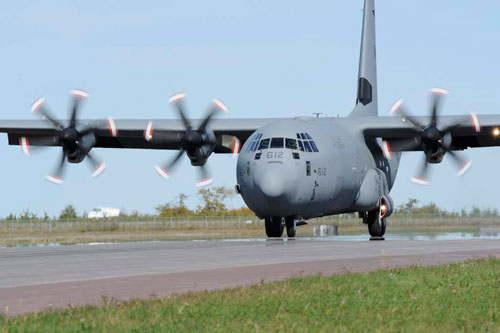(Read Parts I, II, and III here.)
While both the United States and France offer world-class vessels that would greatly improve the Royal Canadian Navy (RCN), they are both designed and built outside of Canada. This means that the economic benefits of such a large Canadian procurement project are transferred out of Canada and into foreign coffers. This exodus of Canadian capital goes against the vision set out by the Canadian government in the Canada First Defence Strategy (CFDS) and the National Shipbuilding Procurement Strategy (NSPS), which call for Canadian maritime defence procurement projects to maximize the economic benefits for Canadians.
By keeping the defence procurement process (the development, manufacture, and maintenance of defence projects and weapons systems) in Canada, the government hopes to bolster the Canadian economy by stimulating investment in high-technology sectors (like aerospace and shipbuilding) and creating jobs throughout the country. Canada’s emphasis on these strategies when making procurement decisions means that the option of a Canadian-designed and Canadian-built amphibious assault ship must be considered.
In the event that the RCN decides to design its own class of amphibious assault vessels, it is likely that they would be partially based on a foreign model and not designed completely from scratch (which is an extremely long and costly process). Basing the vessels on a foreign template means that the vessels would keep the strong points of those designs and could be manufactured relatively easily. It would also allow the RCN to customize the vessels to suit its own strategic needs and operating environment.

For example, Canadian amphibious assault ships based on the Mistral-class would have an excellent combination of sealift and aerial capabilities, and could also be given reinforced hulls to allow them to operate in the Canadian Arctic summer ice with minimal assistance from icebreakers. This Arctic-capable class of amphibious vessels would give Canada the ability to assert its sovereignty and perform vital search and rescue missions in an increasingly important region of the world and help establish the country as a leader in Arctic affairs.
They can also be designed with Canada’s current (and incoming) fleet of helicopters in mind. These vessels would need a large hangar and a large flight deck with at least four landing pads to accommodate the Royal Canadian Air Force’s (RCAF) fleet of CH-149 medium-lift helicopters. If even more lift capacity were needed, the RCN could design the vessels to accommodate a “navalized”version of the RCAF’s CH-47F heavy-lift helicopter by adding extra hangar space and reinforced landing pads.
The benefits of a Canadian-built class of amphibious assault ships are numerous. Economically, the investment of billions of dollars into designing, building, equipping, and maintaining these vessels would create jobs not just in the shipyards of Nova Scotia or British Columbia, but all over Canada. The completion of such a prestigious type of vessel like an amphibious assault ship would be a boon for the reputation of Canada’s shipbuilders and would help reinvigorate Canada’s shipbuilding industry. This would help lead the recovery of areas hit hard by the decline of Canada’s shipbuilding industry and reestablish Canada as a global leader in shipbuilding.
Militarily, a Canadian-designed class of amphibious vessels would fulfill the RCN’s operational needs more than foreign ships could, as they would be designed with the RCN’s unique priorities and constraints in mind. Furthermore, these vessels would help transform the RCN into a true blue-water navy and allow Canada to take on a greater share of North America’s maritime defence.

The main drawbacks of developing an indigenous class of amphibious assault ships are cost and complexity, as the process would entail designing, building, testing, and operating these vessels. Given the RCN’s tendency to procure ships that come in late and over budget, a project this big would almost certainly run into delays and cost overruns. More helicopters, landing craft, vehicles, and personnel would be also needed to fully outfit the vessel, thereby significantly adding to project costs.
On paper, a Canadian-designed amphibious assault ship appears to be the best option for the RCN. The economic and military benefits its design and construction would bring to Canada are unmatched by its foreign competitors. Such vessels could be tailored to the RCN’s exact operational needs and give the RCN the ability to carry out any mission it needed. However, the RCN’s past procurement woes and worries about the Canadian government’s commitment to the NSPS casts doubt on the ability of the RCN to successfully deliver these ships on time and on budget. As evidence mounts that the RCN is unable to manage a project of this size and scope, a Canadian-made amphibious assault ship could be dead in the water.
(This series will conclude with a summary and a look into the RCN’s future if it procures an amphibious assault ship).




